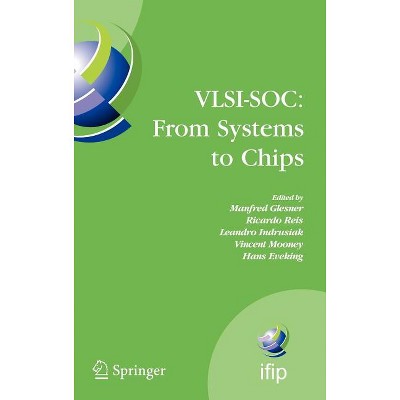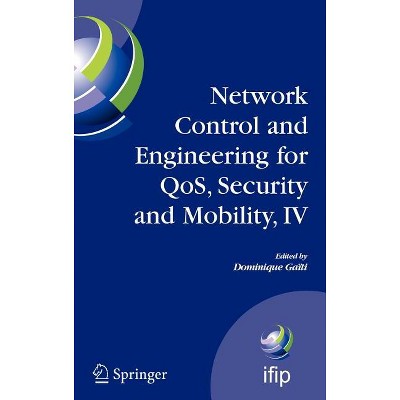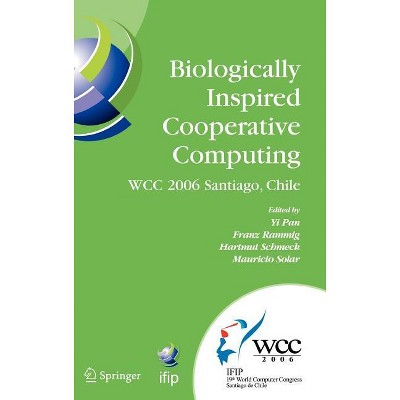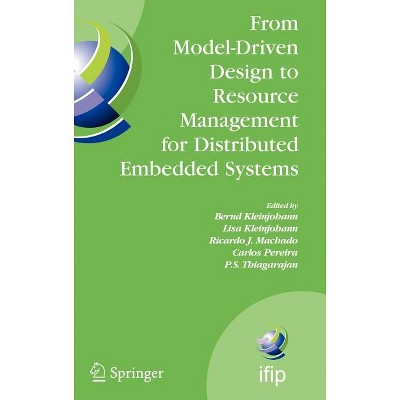Sponsored

The Transfer and Diffusion of Information Technology for Organizational Resilience - (IFIP Advances in Information and Communication Technology)
In Stock
Sponsored
About this item
Highlights
- In a turbulent world where companies are trying to realign their resources faster than the competition, resilience is defined as the capability to absorb strain and recover from untoward events through continuous reconstruction.
- Author(s): Brian Donnellan & Tor Larsen & Linda Levine & Janice Degross
- 365 Pages
- Computers + Internet, Networking
- Series Name: IFIP Advances in Information and Communication Technology
Description
Book Synopsis
In a turbulent world where companies are trying to realign their resources faster than the competition, resilience is defined as the capability to absorb strain and recover from untoward events through continuous reconstruction. Resilience implies a capacity to be robust under conditions of stress and change (Coutu 2002). It can be achieved by creating and maintaining cognitive, emotional, relational, or structural capabilities sufficiently convertible and malleable to cope with a dynamic environment. In the com- petitive marketplace, many countries are making the transition from technolo- importing, efficiency-based development to innovation-based development. Organiza- tions located in so-called "first world" economies are increasingly concerned with making local enterprises more resilient in their current geographical location and firms in "third world" economies are keen to establish and retain knowledge-based economic activities. The focus of this conference is on how IT innovation can contribute to making organizations more resilient. Commercial organizations are trying to make sense of the competitive environment and quickly generate new strategic options. Public organi- zations are struggling to meet societal needs for innovative information services. IT staff have spent much of their energy improving transactional efficiency. IT now needs to be seen as a positive force for making business innovation resilient. Issues such as IT organizational design, social networking, diversity, improvisation, and rich media are likely to advance our understanding of resilience in this context, and account for an organization's need to sustain innovation.From the Back Cover
The Transfer and Diffusion of Information Technology for Organizational Reilience addresses the challenges faced by many organizations today as they strive to be resilient in a turbulent economic and political environment. Resilience is considered in the context of the ideas provided by Everett Rogers in his textbook Diffusion of Innovations, where he provided a framework for evaluating the transfer and diffusion of IT.
The topics in this new book include:
- Improvisation and agility
- IT Support for nurturing core competencies
- Ontological/definitional issues relating to resilience
- Multi-level studies of resilience
- Barriers/enablers to resilience
- Resilience in federated/distributed/virtual organizations
This volume contains the edited proceedings of the Working Conference on the Transfer and Diffusion of IT for Organizational Resilience, which was sponsored by the International Federation for Information Processing (IFIP) Working Group 8.6 (Transfer and Diffusion of Information Technology), and held in Galway, Ireland in June of 2006. The material contained in this book represents current thinking on the topic of resilience by academics and leading practitioners.
Brian Donnellan is at the National University of Ireland, Galway, Ireland
Tor J. Larsen is at the Norwegian School of Management, Oslo
Linda Levine is at the Software Engineering Institute, Carnegie Mellon University, Pittsburgh, Pennsylvania, U.S.A.
Janice I. DeGross is the managing editor of MIS Quarterly at the University of Minnesota, U.S.A.
For more information about the 300 other books in the IFIP series, please visit www.springer.com.
For more information about IFIP, please visit www.ifip.org.











